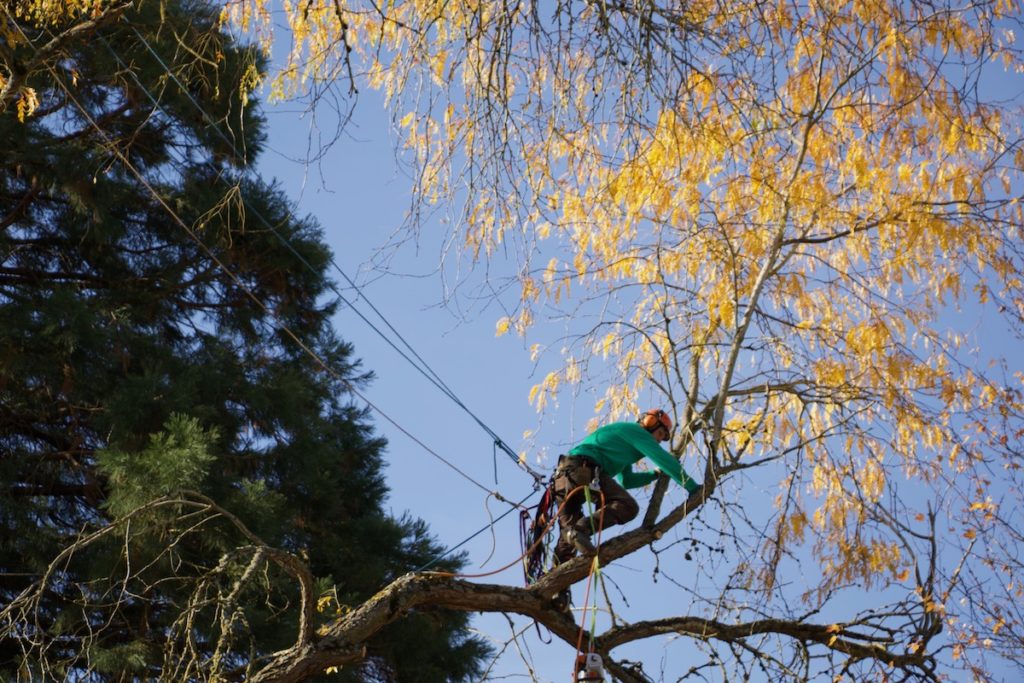
This guide is tailored for the western valleys of Oregon and Washington.
YOU can help to make the world a better, a more friendly, loving and beautiful place by being a good steward of the spot on this earth that you are privileged to be borrowing for a time—your garden. Nathan, the Treevangelist, urges you to treat your spot on this planet like your own personal Garden of Eden paradise. Then notice the joy that it will bring to you! This is your Divinely mandated responsibility. Your trees, shrubs, flowers and the wildlife in your yard will express their smiling appreciation back to you as they radiate love , joy and beauty bursting forth with vibrant and verdant life. Here is a to do list to help you to do just that…
In July as Americans, we celebrate our independence from tyranny and liberty and freedom from oppressive government to pursue our happiness, to speak freely and practice our beliefs and religions according to the dictates of our own individual conscience without others imposing theirs upon us. (For them to do so is called fascism!) To be sure, our freedom and liberty from oppression is a God-given blessing that most other countries don’t have!
In a similar though slightly oblique vein, in the garden, our plants have a celebration of their own going on as they declare their freedom to express their full potential as they burst forth with a panoply of starburst blooms of all shades of red, white and blue. The photo above is a montage of flowers from my own garden.
Let’s all rejoice along with our flowers and be thankful for the blessings that we have of living in the greatest nation on God’s green earth! As one person recently said in light of current events rocking the U.S., it is all too easy to focus on the weeds in the garden instead of on the beautiful flowers, vegetables along with the trees and shrubs. Let’s all work at pulling the weeds out without destroying the good plants along the way! Those who are wise among us will ponder these sagacious words and will work to be part of the solution rather than part of the problem, that is, without destroying the whole garden in the process. — Nathan, the Treevangelist
Readers’ suggestions on how to improve this list are gladly solicited. If you, the reader, have any suggestions for additions to this month’s list, please put them in the comments section of this article, and I will add them to the list. Thank you in advance! — Nathan
Tree and Shrub Care
- Birch trees: Thanks to the bronze birch borer beetle, a large number of the Pacific Northwest birch trees are dying. To make your tree less hospitable to this nasty and lethal pest, there are two inexpensive things you can do. First, apply several inches of mulch to the ground under the canopy of your birch tree. Second, with a whirly bird sprinkler, irrigate the area under the birch’s canopy. The more water the better, since birches are water-loving trees. Irrigate once a week for several hours during warm weather and twice during hot weather. These two actions will lessen the chances that the beetle will attack and kill your birches. The bronze birch borer beetle can be treated in the late spring, but treatments are expensive. Call GNTS. Inc. for more info.
- Dogwood trees: Monitor leaves for signs of anthracnose. (See more info below.)
- Hedges: Shear after spring growth and before hot weather. Shearing during hot weather may result in sun scald of newly exposed under-foliage.
- Maples (including Japanese maples): Monitor the leaves of all maples and other trees and shrubs for symptoms of the potentially lethal verticillium wilt fungal disease. If you see branch dieback, call GNTS, inc.
- Mulch: Apply two to three inches of mulch around all trees and ornamental shrubs. This helps to fertilize the plants and feed the soil, and also protects them against weed growth and loss of water when the warmer weather returns.
- Pine tree pruning: Don’t do major pruning of pine trees during the growing season, since this attracts sequoia pitch moth infestation.
- Pruning of trees and shrubs: You can do all aesthetic pruning of all ornamental shrubs and trees (except pines) at any time of the year including summer. Don’t over-prune the top crowns of thin barked trees (e.g. Japanese maples, flowering cherries), since the sun’s UV rays can cause trunk and branch bark dessication resulting in cracking and dieback of sapwood and even heartwood resulting in entry points for diseases and potential structural failure of branches and trunks.
- Be careful not to do major pruning during periods of hot weather, since doing so exposes tender leaves underneath that haven’t acclimated to the sun’s ultraviolet rays yet, since they have been shielded by the layer of leaves you’ve just removed by pruning. Sun scald of these tender leaves may occur, especially on southern and southwestern sides of the plant. Sun scalded leaves won’t kill the plant, but it looks unsightly and diminishes the plant’s ability to photosynthate (produce food for itself).
- Pruning of large trees: Most trees in the temperate western valleys of Oregon and Washington can be pruned anytime of the year. If you’re not sure what to do, or how to do it, call Good News Tree Service, Inc. for a consultation, pruning lessons or to have them do the pruning for you. It is likely best to wait for cooler weather to prune stressed or sick looking trees. Call us if you have questions about this.
- Prune fast growing ornamental shrubs (e.g. laurel, privet, photinia, laurustinus, barberry) that are beginning to look shabby. You may need to prune them again in the early summer for a more neat and manicured look.
- Tree and shrub removal and stump grinding can be done all year long.
- Trees: Have an ISA Certified Arborist with an ISA Tree Risk Assessment Qualification (like Good News Tree Service, Inc.) inspect your large trees for the potential of failure due to weak root systems and defects in trunks and branches. This can be done anytime of the year.
- Watering: During the hot summer months, well established trees and larger ornamental shrubs need little or no watering. However, newly planted trees and shrubs will need watering for the first two to three summers until their roots get established. Regular lawn irrigation isn’t sufficient to give trees and shrubs the deep watering they need to survive the summer heat. During warm weather, deep water your new plants at least once per week. During hot weather, twice per week.
Plant Health Care
- Deep Root Fertilization: Don’t do so after the weather becomes too hot. Fertilizer will push out new growth, which will likely scorch in sun. This is a waste of fertilizer and plant resources.
- Dogwood Anthracnose: If you missed the spring sprays topical fungal sprays, and you see signs of anthracnose on your tree’s leaves (reddish, purplish, brownish splotches), you can spray your trees with a basal bark fungicide. Call GNTS, Inc. for information on this treatment.
- Monitor trees and shrubs for insect pests: Piercing and sucking plant pests (e.g. aphids, lacebugs, scales, weevils, mites, etc.) are now out and active. If major infestation occurs, plan a course of action to treat your trees and shrubs against these pests. Small numbers of piercing and sucking insects are not harmful to plants. In fact, they provide food for the beneficial, predatory insects that feed on them. To control harmful insects, one can apply systemic insecticides against piercing sucking insects (aphids, lacebugs, scales, weevils, etc.) via soil injections (one treatment gives season-long control). If applied according to label directions, this will kill only the harmful and not beneficial insects.
- Spider mites will start to become active as the weather warms. Systemic insecticides are available against this pest.
- Tent Caterpillar: Apply systemic pesticide for season-long control.
- Verticillium Wilt: You can still treat trees for this soil born fungal pathogen during the summer, but fall is the best time to treat, and spring is the second best time. Maples are especially plagued by this disease. During hot weather, symptoms include smaller than normal cupped leaves in the upper canopy, often with the death of the entire branch occurring.
Elsewhere in the Garden
- Put slug bait around your flowers and tender perennials like hostas.
- Apply two to three inches of mulch (e.g. bark dust, garden compost or wood chips) on all of your shrub beds. Covering bare dirt areas in your yard with mulch helps to prevent soil compaction from rains, and weed growth, and helps to enrich our heavy clay soils.
- Cut English ivy off of the base of trees. (This can be done any time of the year.)
- Feed the birds. Dutifully maintain your bird feeders. Bring life and excitement to your backyard by turning it into a bird sanctuary. The birds will thank you for your generosity by providing you with hours of entertainment, and by eating insect pests that harm your ornamental trees and shrubs. Birds in the yard are not only fun to watch, but they perform the vital task of eating harmful insects. Keep bird baths full. In hot and dry weather, birds need water to drink and to bathe in.
- This is a good time of the year to plant trees and shrubs. Visit your local nursery and select your favorite ornamental shrubs and shade trees. After planting your new shrubs, just make sure that you water them well immediately and regularly subsequently for the first two or three summers until their roots get established. During warm weather (in the 60s to low 80s), deep root water once per week. During hot weather (mid-80s and higher) deep root water at least twice per week.
- Water and fertilize annuals and perennial flowers. The hotter the weather, the more water they will need. Flowers in pots and hanging baskets dry out especially quickly, and so need watering every day or two.
Rose Care
- Dealing with rose pests: Spray or treat roses with a fungicide as needed preventively to insure protection against fungal pathogens such as black spot, powdery and cottony mildew, rust and spot anthracnose. Apply a fungicide only after the rose has put out several inches of new growth. Excellent choices of both organic and inorganic fungicides are available at your local garden center or nursery. Some fungicides require spraying in the early spring as the new growth is emerging. Major plant pests include mites, aphids, thrips, rose slugs, leaf rollers, rose midge, spittle bug and sawfly. Determine what pest or disease your rose has, do some research online if necessary to ascertain this, and then visit your local garden center or nursery to find the right product for the job. Always read and follow all label directions. It’s the law!
- Late spring, summer and into early fall: During prolonged warm, dry weather, deep root water your roses at least once a week. A rose needs five gallons of water per plant per week.
- As needed, remove spent flowers after they are done blooming.


